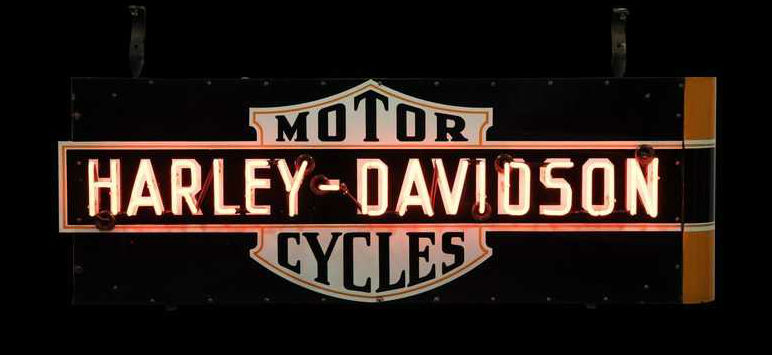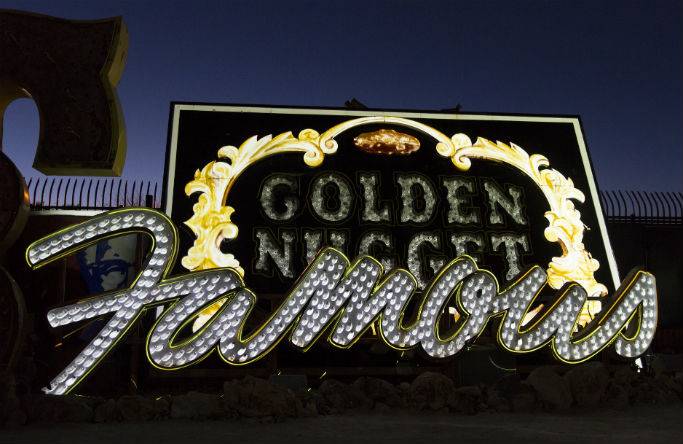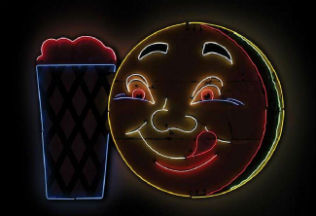
NEW YORK – Part science, part contemporary art, neon signs have been a ubiquitous part of the urban landscape for decades and their playful aesthetic makes them well suited to jazzing up one’s home decor, particularly mid-century examples that have a retro feel. Collectors are usually drawn to neon signage for its steady glow featuring vibrant colors, which elicit a keen sense of nostalgia.
After the Pop art era awakened artists to the possibilities of unconventional materials, artists like Keith Sonnier, Joseph Kosuth, Bruce Nauman and Tracey Emin readily embraced neon starting around the 1960s, creating sculptures and art installations.
Among top-selling artists working in neon are Nauman, whose Double Poke In The Eye II, 1985, sold at Phillips in April 2011 for $240,000. His conceptual works are famous for their use of wordplay to explore issues and provoke the viewer. His clever wordplay is most evident in works like the anagrammatic Raw-War, 1971, or None Sing Neon Sign, 1970, the latter in the collection of the Guggenheim Museum. Emin’s elegant neon works such as I Woke Up Wanting to Kiss You combine handwriting to express inner thoughts yet appeal to viewers owing to their universality.

Neon art attracts collectors but in keeping with the medium’s roots in science and art, purely commercial neon signs are also eagerly coveted. Buyers snap up a wide range of examples, from a colorful neon flamingo sign or a cocktail glass complete with a neon olive to signs reading Taxi or Diner or signs for a favorite beer or local restaurant.
“Neon is a gateway between scientific principles and artistic expression. Neon illumination integrates electrical technology, creative design and fundamental concepts of physics and chemistry,” according to commentary on the website of the Museum of Neon Art in Glendale, Calif., which showcases such quintessential neon signs such as the neon hat from Hollywood’s famed Brown Derby restaurant.

French engineer Georges Claude invented neon after experimenting with running electrical currents through tubes filled with noble gas in 1907. In 1910, he displayed the first neon lamps in Paris, and by 1912 the first commissioned sign was created for a Parisian barber. Neon signs spread to America and within a few decades transformed major cities like Los Angeles, Chicago, Phoenix, Miami and New York. When neon fell out of favor in many places, it has continued to be an integral part of Las Vegas. What would the famed Vegas Strip look like without neon?

“Neon as a whole verses neon in Las Vegas have very different timelines. Las Vegas embraced it and continued to design with it up to recent times, as it slowly faded away in other parts of the country,” said Tracey Sprague, collections manager of the Neon Museum in Las Vegas. “I think most people would say the heyday for neon, whether in Vegas, or across the United States, was during mid-century.”
The first neon signs sprang up in the mid-1920s in the United States, with Las Vegas receiving its first around 1928. “Neon played a large role in the success of the city. Because Las Vegas was a young city, it had plenty of space to grow and allow for large and impressive signs,” Sprague said. One of the more noteworthy signs in the museum’s collection is the Stardust pylon, created in 1968, which at one time was the largest in the world, standing a whopping 188 feet tall. It also tends to be a favorite not only because of its design, but due to its references in pop culture, such as the movie Casino.

Traditional fine art museums have also embraced neon, such as the Neuberger Museum of Art in Purchase, N.Y., which last year hosted “Bending Light: Neon Art 1965 to Now.” The exhibition surveyed artists’ use of neon to express language and message, light and line, technology, and the ethereality of the medium itself.
Neon has run the gamut from being seen as commercial and cheap, especially in the grittier and seamier areas of a city, to being elevated to high art. Neon shows no signs of going away even as LED lighting replaces it in newer commercial signage. Vintage neon signs are a perennial favorite, adding a charged character to a room.



